|
|
Nseries at Nokia Open Studio New York
Once in six months Nokia freshens up its very own N-Series line-up – as you know the previous presentation took place in Berlin at the turn of April. Back then the company came up with three handsets - Nokia N72, Nokia N73, Nokia N93. And since all there models have been around for quite a while, now it’s the right time to excite consumers with more features and renew the range. A thing of note is that it’s Nokia Multimedia Division’s first experience of launching not three, but a whole set of models at once – in some ways it’s a sign marking a major change in the company’s strategy and shift to completely new goals. With so much information coming from all around, let us dig a bit deeper and dot the “i’s”.
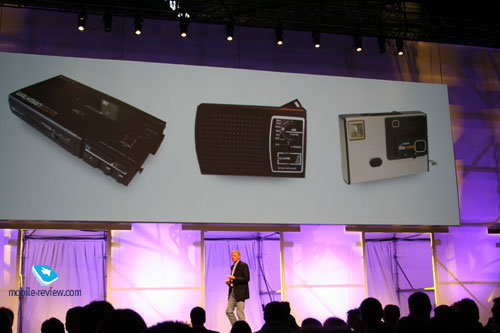
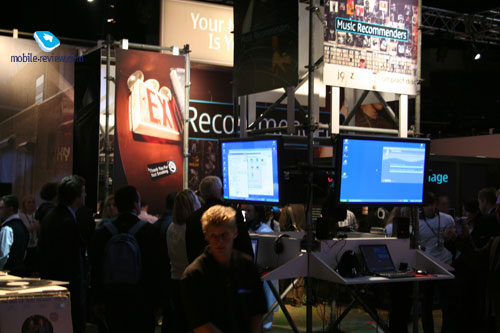

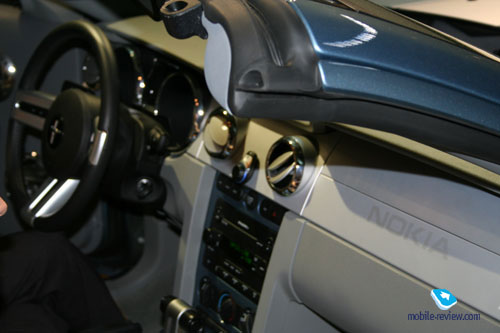
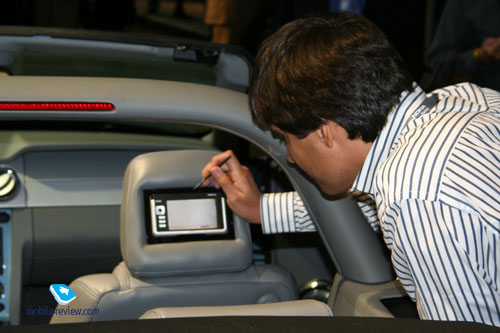
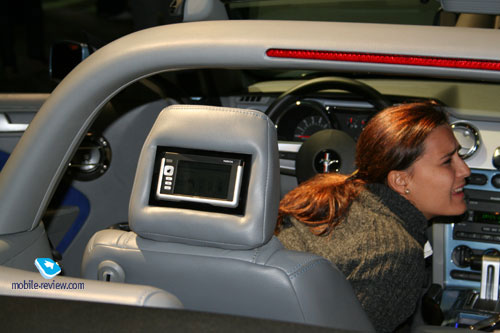

It’s not a secret that in case of smartphones, releasing Special Editions is not a big deal – alter sales package, the box itself, amplify the device with a number of freeware programs and that is it. The company has been producing Limited/Special Edition smartphones only for a little time - Nokia 6630 Music Edition, Nokia 3250 WESC Edition might blink in one’s mind outright. While making minimal investments, the company prolongs life cycles for models and somewhat pushes those who are uncertain about purchasing one or another phone towards obtaining one of them. It’s quite interesting concept that has proven to be worthy of being materialized, as it allows widening the range without having to make up new indexes and thus confuse customers.
As for the latest Nokia’s announcements of this kind, we surely have to point out Nokia N80 Internet Edition that retains several custom applications unseen on the original Nokia N80, namely Mobile Search, Nokia Podcasting, updated OSS Browser, SIP VoIP, download manager and a number fixes as well. But generally speaking, every little custom thing found on the Internet Edition can be manually installed by the users of the original Nokia N80 without much problem. In course of an unofficial conversation, a Nokia’s representative mentioned that the WiFi module has received several changes in both software and hardware aspects, which makes it put on better performances and enables the handset last longer. At that ordinary N80s, being produced today, incorporate just the same alterations. Nevertheless, it’s a bit early to make any official statements on that – a review on Nokia N80 Internet Edition will be available on Mobile-Review quite soon; there we will examine WiFi and other modifications.
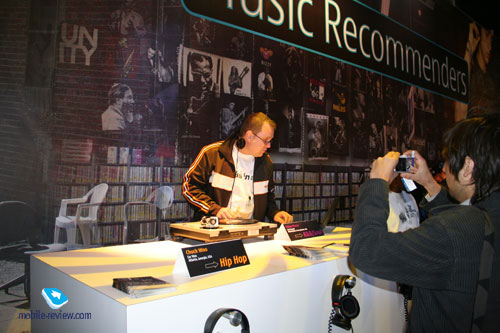
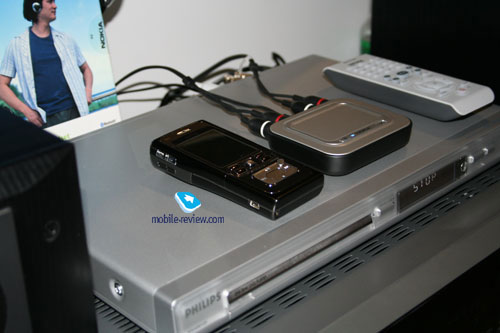
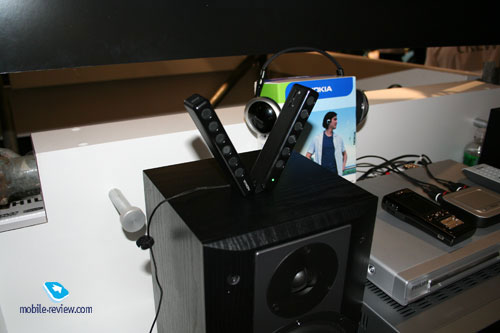
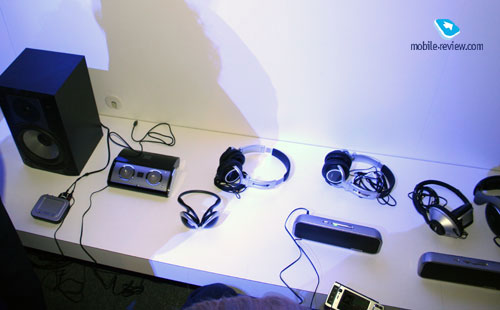
But this time, the company has armed the new Editions not only with software changes – it has upgraded the hardware filling as well. I should also make a note that the newcomers retain all software updates available for their predecessors, so they turn out to be more stable solutions. Nokia N91 has received a successor in the form of 8 Gb Edition (while the original device has 4 Gb onboard). Even though the new handset offers twice as much storage, it puts on the same performance when it comes to energy consumption, or, well, almost the same, however this difference will be overlooked by unsophisticated users. The new model will go by the name of Nokia N91 8 Gb and will come in black. The refreshed N91 will hit the market at the beginning of November at a price about 100 Euro higher than that of the original Nokia N91.
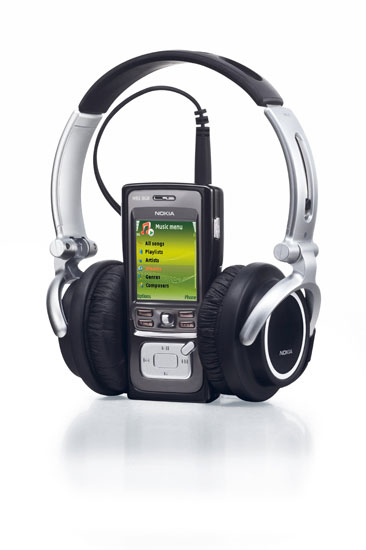
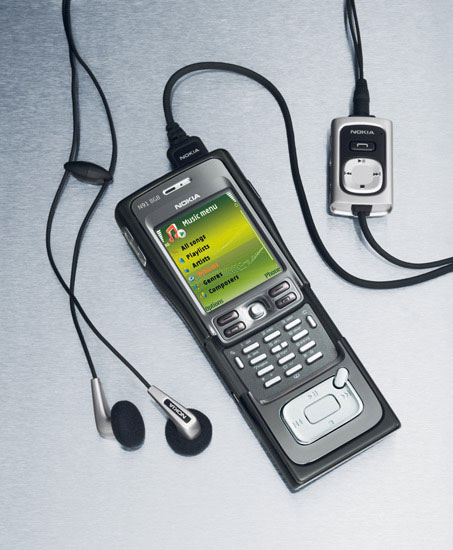
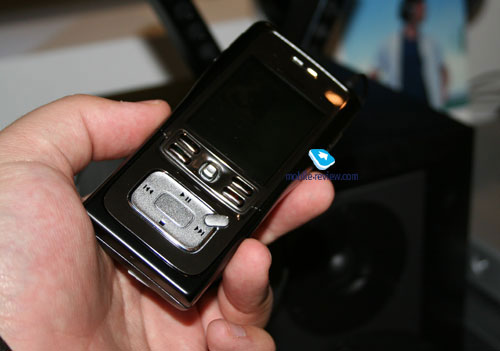
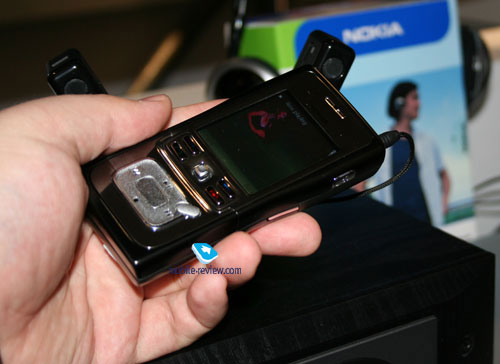
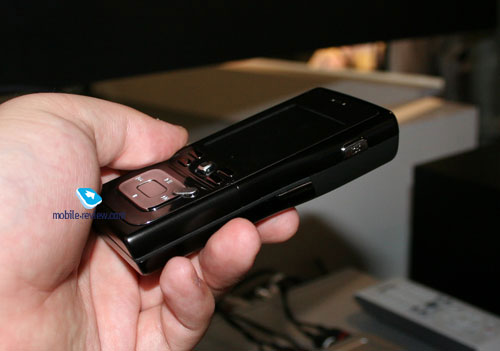
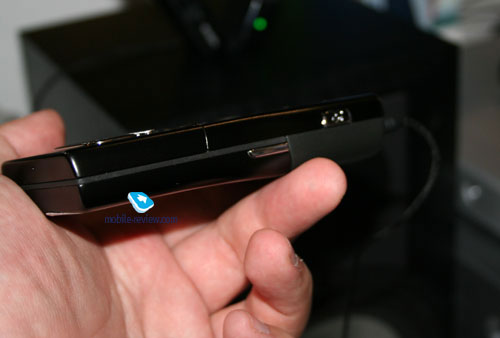
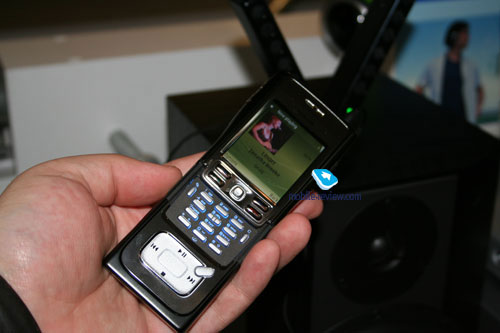
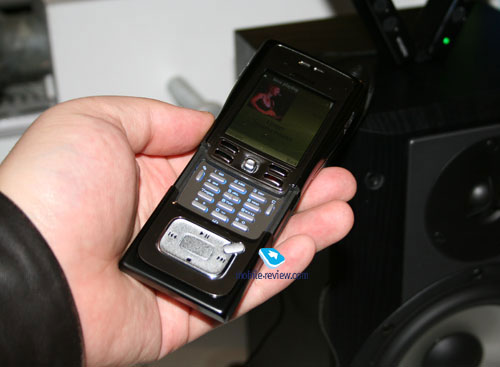
Models Nokia N70 Music Edition and Nokia N73 Music Edition have black finishing as well, but propose less revolutionary changes – only different sales package and updated software kit, while their hardware parts match those found the predecessors.
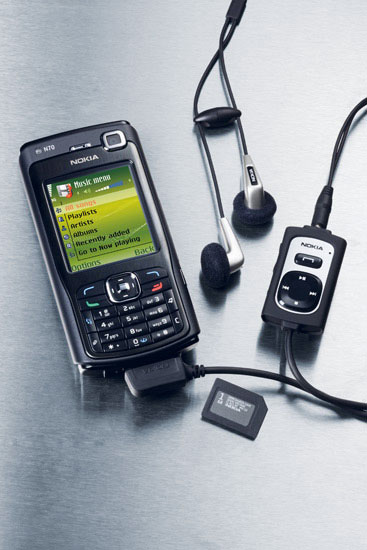


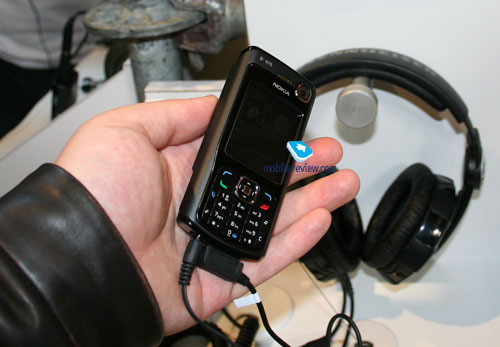
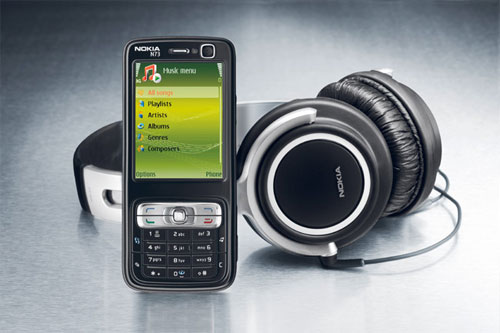
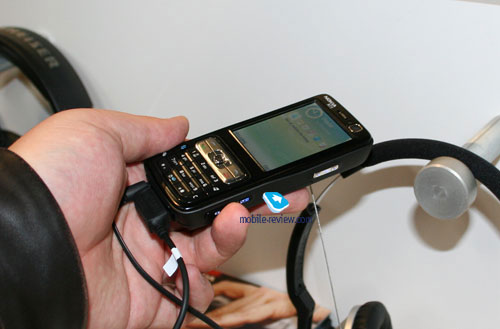
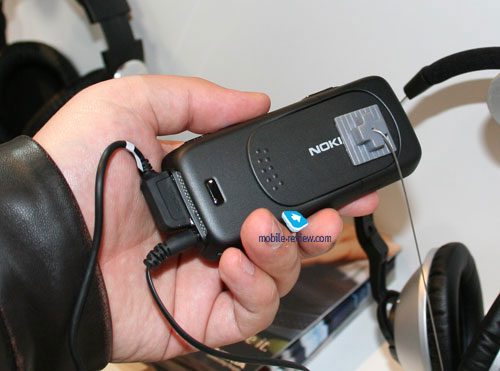
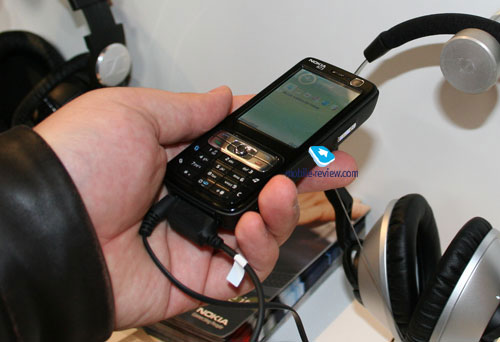
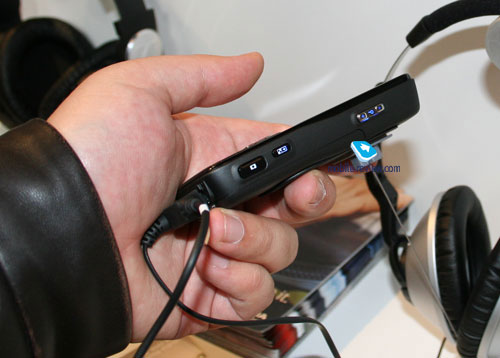
Nokia N95 is a new flagship device of N-Series range, which takes the place of Nokia N93. A keen observation has been made – the company keeps one flagship alive for nearly half a year, but at that goes on with releasing new solutions and thus creates extremely high churn rate within the line-up. In terms of technologies, Nokia N95 beats Nokia N93 (however it’s a thing to be examined, but on the face of it things look this way).

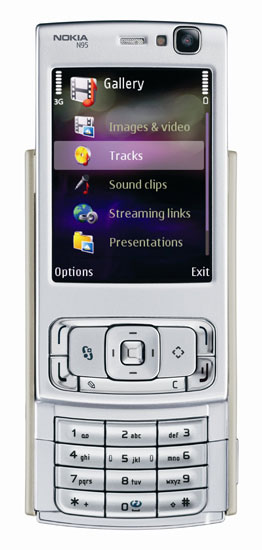
Unlike Nokia N93, the brand-new device doesn’t look huge, as it measures 99õ50õ20 mm in size (Nokia N93 – 118x55.5x28 mm). And basically, it’s a really credible improvement that enables the N95 to obtain the title of a “true flagship”, rather than another high profile powerhouse. This approach is applied by Samsung, when seemingly fetching models transform into high-tech trinkets due to being enormously bulky - no one would agree to have such brick around, even if it was the most advanced device to date. Drawing a parallel, we cannot pass by notebooks that have become quite compact and therefore easier to manage with time.

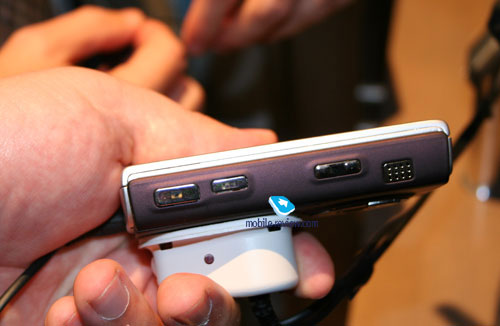
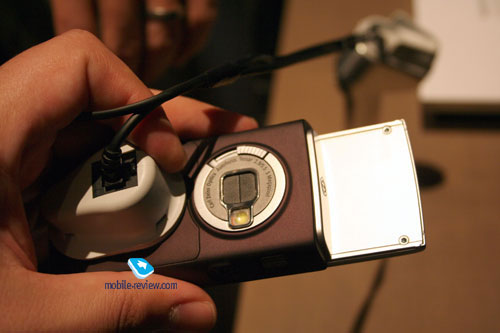
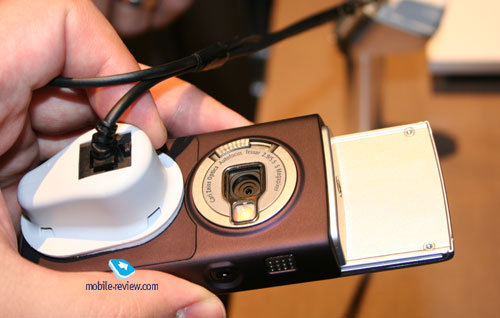
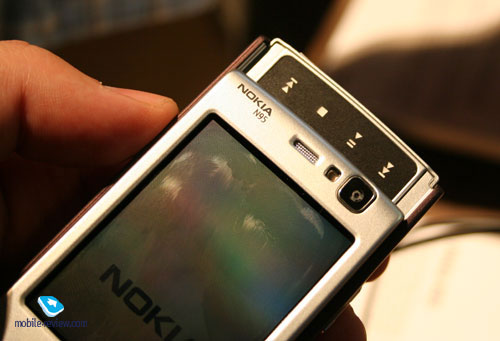
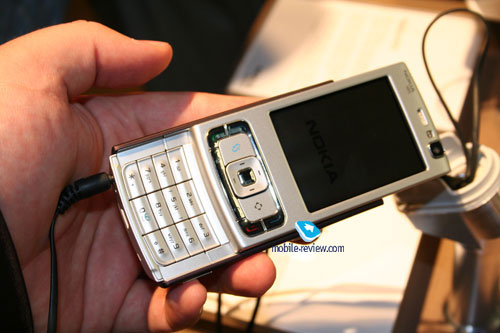

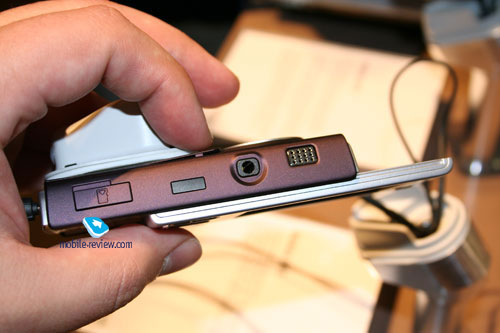
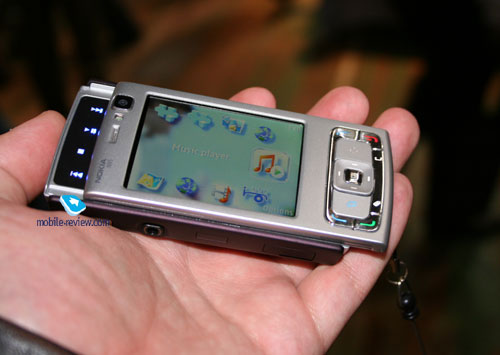
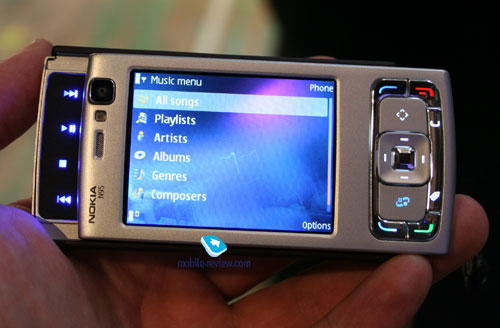
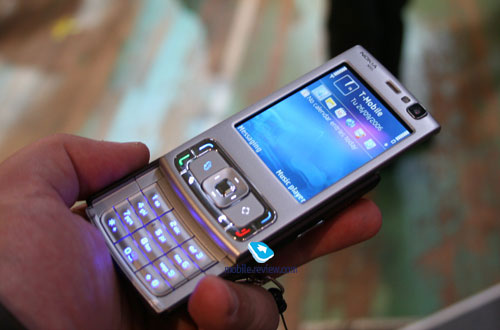
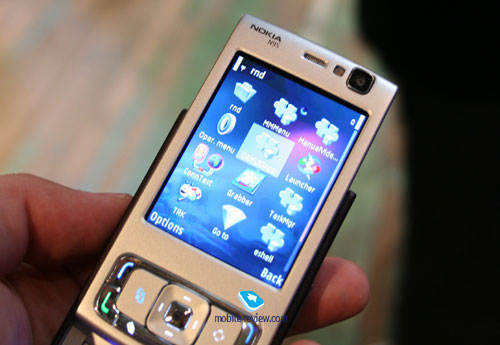
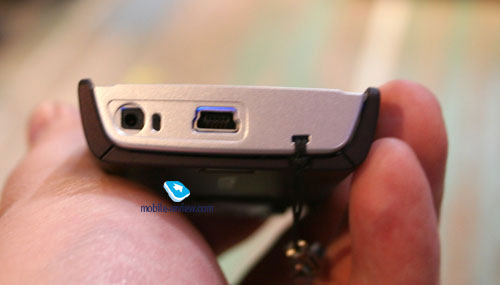
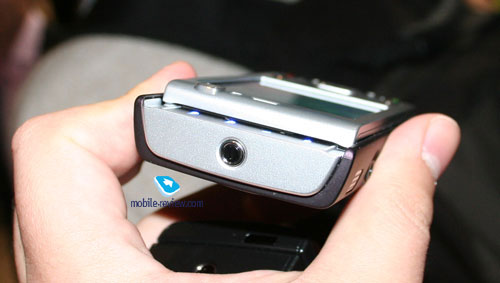
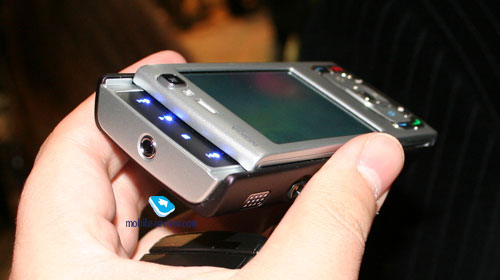
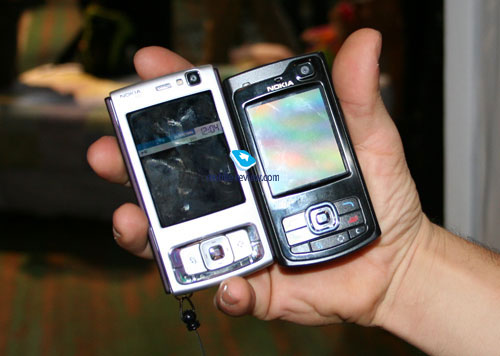
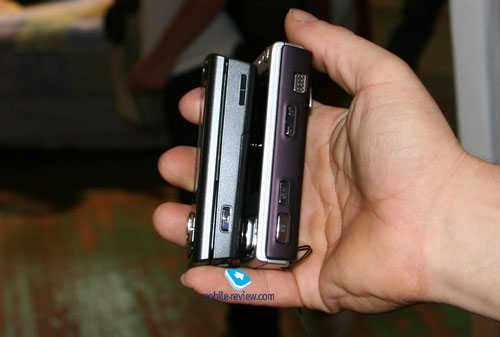
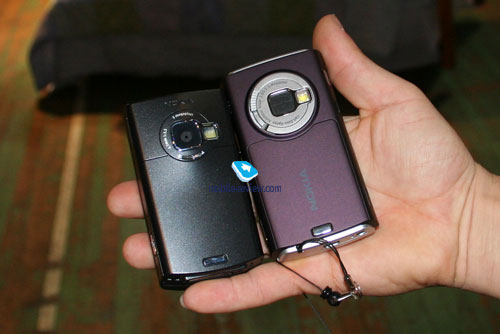

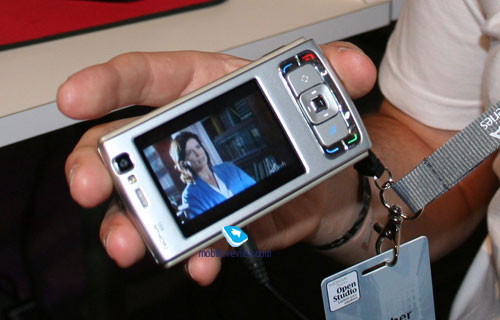
However the first impression left by Nokia N95 was “it’s just another powerhouse” – the combination of HSDPA (the first 3.5G smartphones in the N-Series) and hardware GPS receiver looked pretty unusual. However the need for HSDPA is quite obscure nowadays, as it’s rather a feature for operators keen on testing out that service. Nokia N95 incorporates HSDPA class 6 protocol. On the other hand, by the release of Nokia N95, some regiosn might already have HSDPA service available; on top of that, taking account of the N95’s target techi audience, we naturally come to think that this technology is not useless at all here.
The device houses a GPS receiver; however over at Nokia they considered that accurate coordinates were not a must, unlike lifetime and the gadget’s main functionality (Places of interests, whereabouts). The manufacturer claims that current coordinates are tracked with fairly acceptable precision – plus/minus 10 meters in cities, under best conditions. On the other hand, though, it’s Nokia’s first experience of embedding such feature, so that the N95 is destined to be a trend-setter, rather than a major breakthrough – you should expect much from it. Nokia’s smartphones have had the feature for handling external GPS-receivers, as well support for these gadgets on the OS-level, for quite a while now.
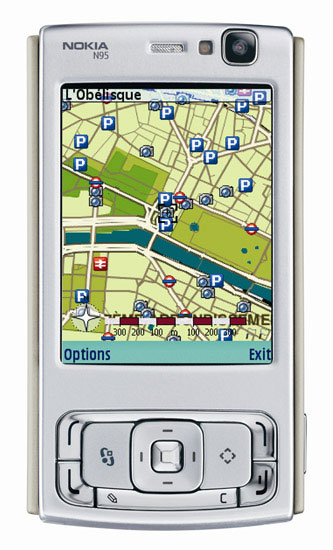
Over at Nokia, however, they say that city navigation with Nokia N95 is a breeze, as the model is capable of displaying maps, routes and so on. Nevertheless, we should see about that, since your humble servant is quite skeptical about such features at the moment.
As regards GPS, there is another thing that can exert great influence upon the market – the standard software kit includes an application going by the name of Maps. With its help, users can upload maps of the world’s largest cities and use them without having to pay anything. This technology has been passed on to Nokia by gate5 (taken over by Nokia lately). Apart from the maps themselves, the application offers tool tips on sights and other places of interest. The only chargeable piece of software is an add-on module, enabling navigation on the road (sound notifications, enhanced route building etc.).
However the fundamental difference of Nokia’s approach from everyone else’s is not the freeware navigation program – other companies don’t charge for it either. What really matters is that Nokia has decided to invade the market by offering free city maps, in other words they provided basic functionality for their application without requiring any payments, while other manufacturers prefer letting users get maps for money. Apparently, it’s quite a good claim for being a success and should the GPS-functionality get a boost on Nokia’s smartphones, in 2007-2008 the company will be capable of shape-changing the fundamentals in this field.
The rest of the device’s specifications look just as charming. Software-wise, the device runs on S60 3d Edition FP1, which was reviewed in details quite a while ago – I strongly recommend that you read this article.
S60 3d Edition Feature Pack 1
Consumers will surely get impressed, when they find out that the device is equipped with a 5 Mpix camera powered by Carl Zeiss lens. Support for macro-mode is onboard, as well as slightly altered shot processing algorithm and somewhat improved interface.
Apart from the increased resolution, we can rightfully say that for the first time a camera boasts equally optimized still image and video capturing modes. Video quality delivered by the N95 matches that of Nokia N93 and doesn’t feature any shifts for better or worse – it records clips in DVD-quality at 30 frames per second. Presence of a TV-out will come in handy for watching self-made video on the TV-set. And in terms of still images quality, the N95 is as close to Nokia N73 as possible.
Nokia N95 retains improved and patched up Flickr-based services – the first devices that featured such capabilities forced users to set up access separately and register a special account.
For at least two months after the release, the camera module found on Nokia N95 will be able to hold on the leading spot in its class (video, shots resolution, etc.). Basically, it’s a serious claim to overall leadership in technologies, made by Nokia.
The device is armed almost with all wire and wireless interfaces available up to date - WiFi, UMTS, Infrared, Bluetooth (2.0 with EDR and support for A2DP provided by the FP1). miniUSB socket, which is becoming a must for all devices by Nokia, is mounted on the casing – the company tends to incorporate miniUSB both into smartphones and ordinary handsets (just remember Nokia 7390, for example).
Music seems to have gotten the highest priority on Nokia’s to-do list, as the company now aims at taking over the leading spot in this field and overcoming Sony Ericsson’s Walkman. And Nokia N95 is a major leap up in that. The volume of bundled memory, which makes 150 Mb, is not enough for storing much music, but you can always turn the sight to microSD memory cards. Support for MTP, allowing for synchronization with Windows Media Player and use of all its capabilities is onboard. Those, who don’t really like that application, can manage their music library via USB Mass Storage.
Why Nokia N95 represents the next generation of music phones by Nokia? First, 3.5 mm jack for custom earphones is available – so far, only Nokia N91 has offered that feature. Moreover, the N95 adopts the music flagship’s sound quality as well and thus is capable of making it to the top of its class.
For music management purposes, the casing houses dedicated music buttons, but there is no use in looking for them on the external part of the device, as the N95 is the world’s first phone to feature two-way slide concept – by sliding it open in a usual way, you will reveal the keypad, so everything is clear so far. But moving the upper half downwards allows you to observe a tiny panel with dedicated player keys, which is a very appealing solution, greatly expanding functionality of the N95.

The handset features FM-radio with Visual services, though that’s about it for the time being.
The handset shows off a QVGA display (240õ320 pixels, 2.6 inches). Reasons for using of such screen originate mainly from the limitations on power consumption; it was a really challenging task to embed all Nokia N95’s features in such compact casing. The standard 950 mAh Li-Ion battery is the only one available for the model; therefore don’t pay too much attention to the manufacturer’s statements on lifetime (they hold true only in case you own the device as a trinket) – in reality, you will have 10-11 hours at best, and after that recharging is inevitable. Active users, who are into WiFi connectivity, web surfing (regardless of connection type), imaging and music will more likely end up having less than 7-8 hours of lifetime. And that appears to the handset’s most crucial drawback – it seemed to me that the N95 worked by 10-15 percent less than Nokia N80 running on firmware 17.
Approximate unsubsidized price for the N95, announced by the manufacturer, is 550 Euro, which will transform into 700-750 Euro in most countries. On the Russian market, the price won’t drop down from the level of 1000 Euro during the first months after release. The model is expected to start shipping in March, 2007. Definitely, the brand-new Nokia N95 will get more followers that Nokia N93, since it’s a truly fetching device, exposing only one serious shortcoming – battery lifetime.
Nokia N75 is another music-centric model, scheduled for release on the US market before this Christmas, while the European market is to see it only at the beginning of 2007 (April or May – that’s unofficial information on the date). Technology-wise the model doesn’t bring anything new to the table as compared to Nokia N71. The major differences lie in presence of stereo-speakers (similarly to Nokia N73) and the front panel that now houses dedicated player keys and allows checking out track’s title on the external screen (diagonal 1,36”). On the other hand the volume of bundled memory, which amounts 40 Mb, seems to be somewhat out of place; microSD memory cards are supported (though the sales package includes a small one – either 64 Mb or 128 Mb). The built-in 2 Mpix camera module looks like it was adopted from other company’s products. The main display boasts QVGA-resolution at a diagonal of 2,6” inches.
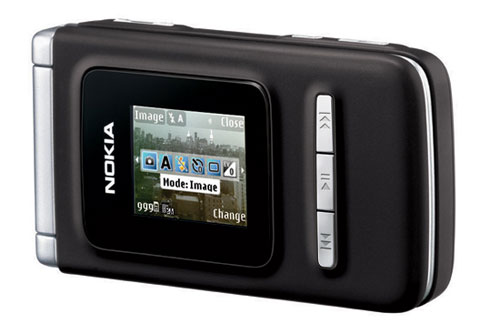
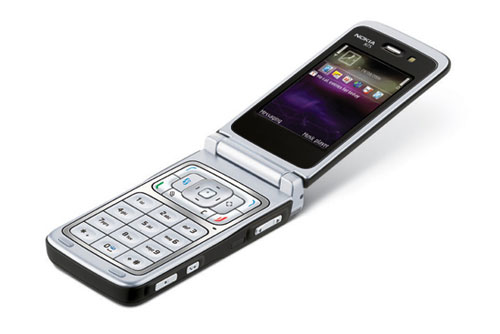
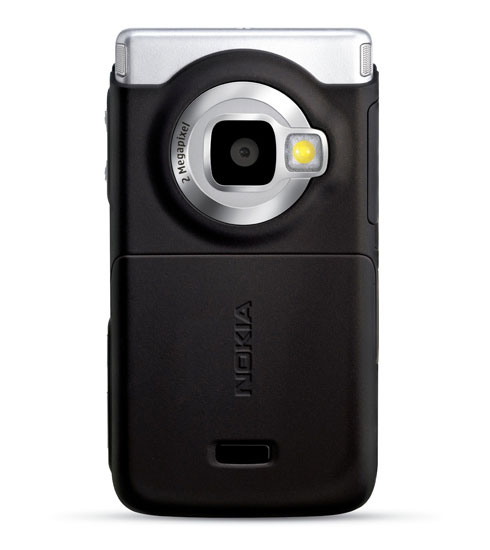
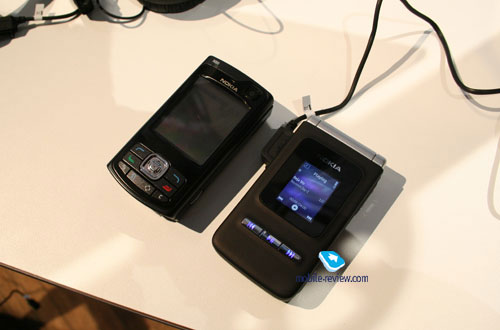
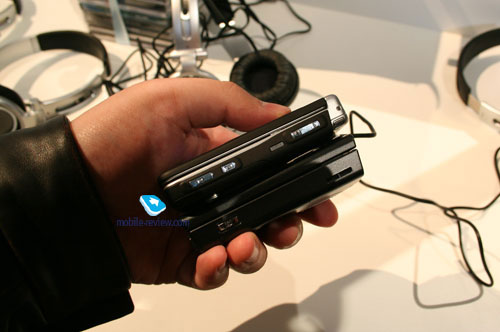

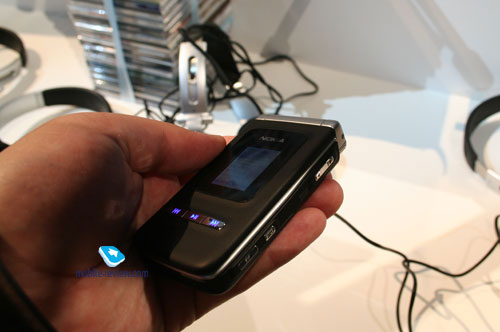
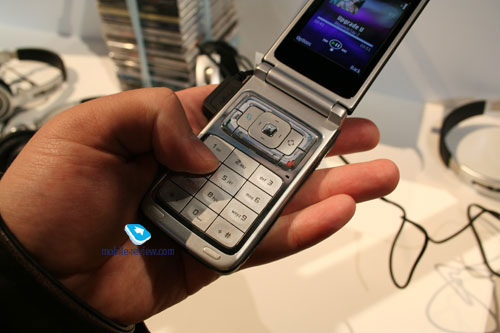
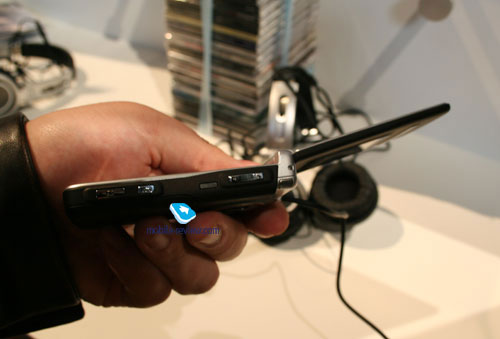
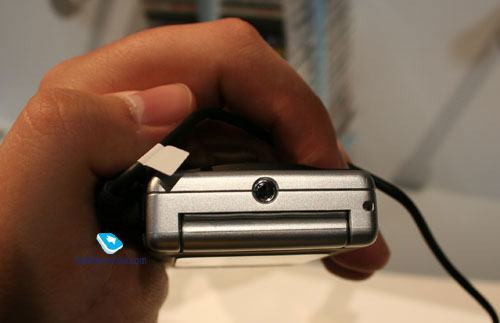
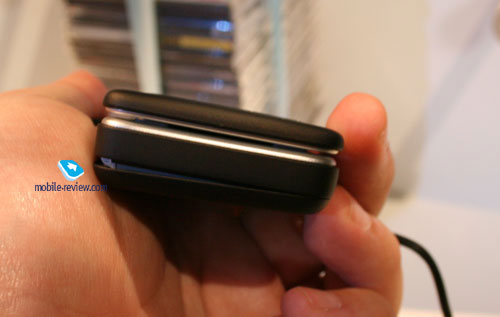
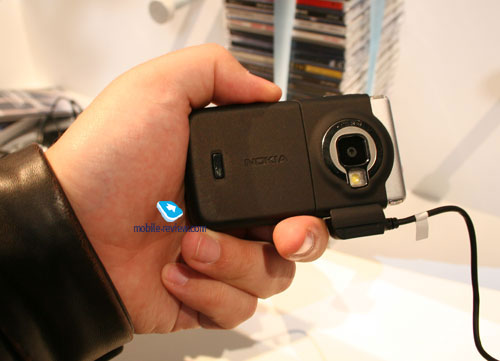
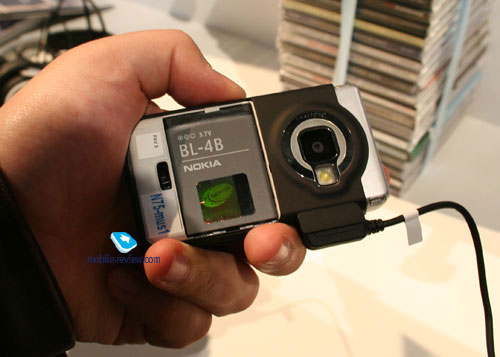

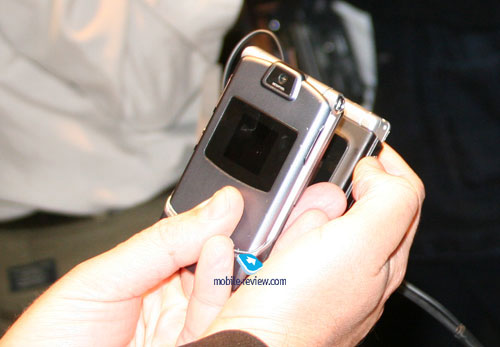
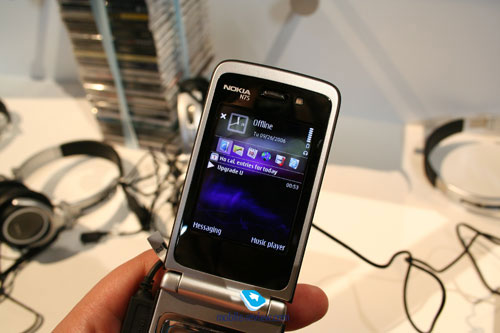
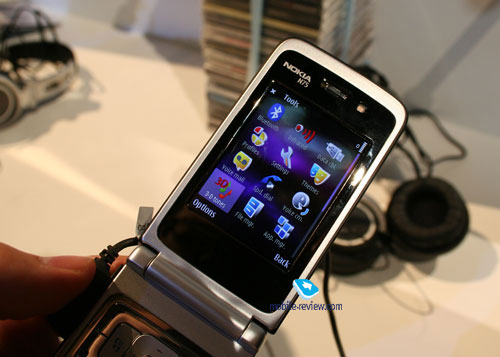
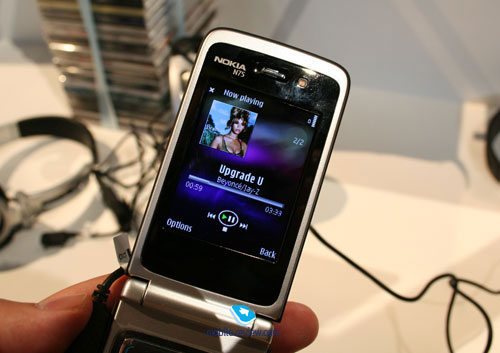

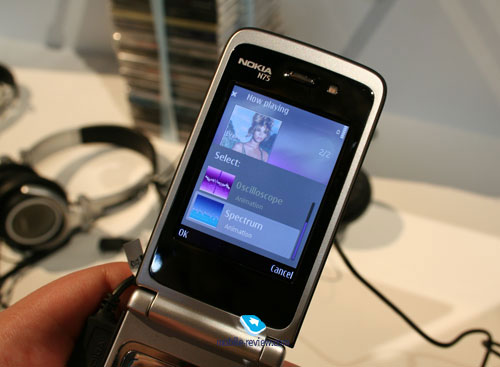
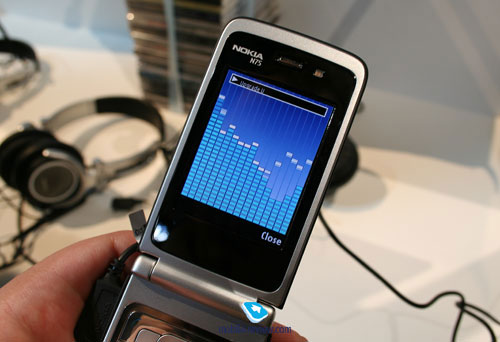
This solution will cost roughly 450-500 USD. Even though the brand-new N75 appears to be quite applealing, having missed the beginning of year it might loose all its charm, as the market will get occupied with competing devices.
Short conclusion
The Nokia’s latest announcement is very fetching, to say the least, as it is only now, when the company has publicly laid claims to the market of music-optimized handsets and, furthermore, made a very bold step in that direction. The release of a new flagship device is point of interest, since so far it’s one of market’s best proposals. Stay tuned – loads of photos featuring all devices shown at the presentation are to come.

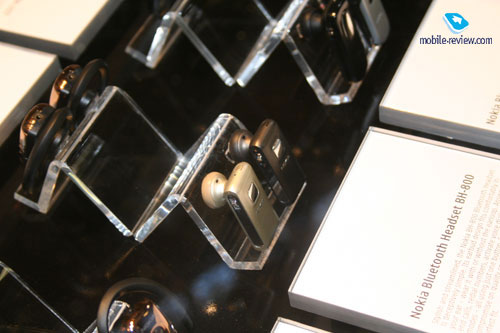
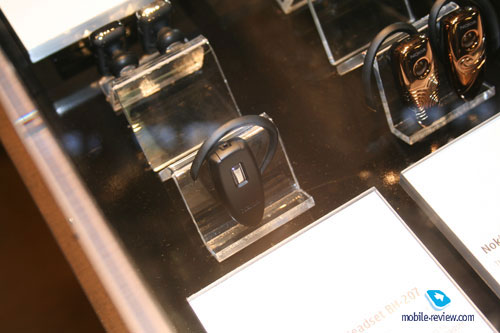
Eldar Murtazin (eldar@mobile-review.com)
Translated by Oleg Kononosov (oleg.kononosov@mobile-review.com)
Published - 27 September 2006
Have something to add?! Write us... eldar@mobile-review.com
|
News:
[ 31-07 16:21 ]Sir Jony Ive: Apple Isn't In It For The Money
[ 31-07 13:34 ]Video: Nokia Designer Interviews
[ 31-07 13:10 ]RIM To Layoff 3,000 More Employees
[ 30-07 20:59 ]Video: iPhone 5 Housing Shown Off
[ 30-07 19:12 ]Android Fortunes Decline In U.S.
[ 25-07 16:18 ]Why Apple Is Suing Samsung?
[ 25-07 15:53 ]A Few Choice Quotes About Apple ... By Samsung
[ 23-07 20:25 ]Russian iOS Hacker Calls It A Day
[ 23-07 17:40 ]Video: It's Still Not Out, But Galaxy Note 10.1 Gets An Ad
[ 19-07 19:10 ]Another Loss For Nokia: $1 Billion Down In Q2
[ 19-07 17:22 ]British Judge Orders Apple To Run Ads Saying Samsung Did Not Copy Them
[ 19-07 16:57 ]iPhone 5 To Feature Nano-SIM Cards
[ 18-07 14:20 ]What The iPad Could Have Looked Like ...
[ 18-07 13:25 ]App Store Hack Is Still Going Strong Despite Apple's Best Efforts
[ 13-07 12:34 ]Infographic: The (Hypothetical) Sale Of RIM
[ 13-07 11:10 ]Video: iPhone Hacker Makes In-App Purchases Free
[ 12-07 19:50 ]iPhone 5 Images Leak Again
[ 12-07 17:51 ]Android Takes 50%+ Of U.S. And Europe
[ 11-07 16:02 ]Apple Involved In 60% Of Patent Suits
[ 11-07 13:14 ]Video: Kindle Fire Gets A Jelly Bean
Subscribe
|











































































